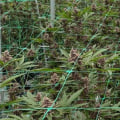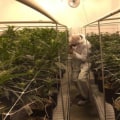In general, it is a crime to manufacture controlled substances and illegal drugs in California. However, the cultivation of marijuana, within certain limits, is allowed for personal use. Health & Safety Code 11358 HS defines the crime of illegal cultivation of marijuana. Although adults 21 and older can now grow up to 6 cannabis plants, the law makes it a misdemeanor offense to grow above these limits. In general, it is a crime to manufacture controlled substances and illegal drugs in California. However, the cultivation of marijuana, within certain limits, is allowed for personal use. Health & Safety Code 11358 HS defines the crime of illegal cultivation of marijuana. Although adults 21 and older can now grow up to 6 cannabis plants, the law makes it a misdemeanor offense to grow above these limits.
A conviction is punishable by up to 6 months in prison. Some doctors are charging customers extra for so-called “grow licenses” that supposedly entitle them to grow more plants than normal. There is no such thing as a “cultivation license” under California law. Any patient with a California doctor's recommendation can legally grow or possess as much marijuana as they need for their personal medical use, and nothing else.
No doctor can authorize them to grow more (they can only testify in court that a certain amount of marijuana is consistent with the individual needs of the patient and they have no professional competence to prescribe plant numbers). Under the Compassionate Use Act, qualified patients and their caregivers can grow cannabis for personal use, subject to local laws. California's 58 counties are updating and establishing local policies on cannabis retail, manufacturing and cultivation laws on a frequent, almost daily basis. Specifically, this section of the code defines the crime of illegal cultivation of marijuana if someone between the ages of 18 and 20 grows marijuana.
Cities and counties across the state have moved to establish zoning regulations for growing medical cannabis. The North Coast Regional Water Quality Control Board has issued an order for cannabis cultivation and similar activities along with Best Management Practices.






